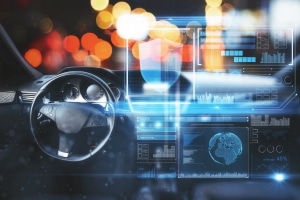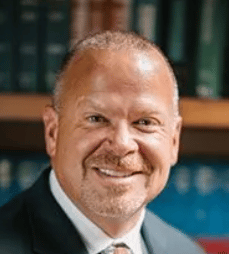 On March 18, 2018, a self-driving Uber Volvo SUV killed 49-year-old Elaine Herzberg as she walked her bicycle across a street in Tempe, Arizona. She’s believed to be the first pedestrian killed by a self-driving vehicle. This tragic accident is raising many new questions about the safety of autonomous vehicles.
On March 18, 2018, a self-driving Uber Volvo SUV killed 49-year-old Elaine Herzberg as she walked her bicycle across a street in Tempe, Arizona. She’s believed to be the first pedestrian killed by a self-driving vehicle. This tragic accident is raising many new questions about the safety of autonomous vehicles.
The Uber was in autonomous mode—but with a human safety driver behind the wheel—when it struck Ms. Herzberg, who was crossing the street outside the crosswalk. The collision happened at night, around 10:00 pm. Uber has now temporarily suspended its testing of self-driving cars in Tempe, San Francisco, Toronto, and Pittsburgh.
New questions about autonomous cars
Autonomous cars are likely the wave of the future—across the country and here in Tennessee. But this fatal accident is sure to raise concerns about safety and regulations for self-driving cars. We’ve heard a lot about how autonomous vehicles will drastically cut down on car crashes, injuries, and fatalities. However, their interactions with humans present complications. Pedestrians tend to confuse self-driving cars’ systems and sensors because pedestrians are simply unpredictable. Even we, as humans, sometimes have a hard time dealing with pedestrians. How many times have you had to slam on your brakes because someone or something darted out in front of you?
Police in Tempe released a 22-second video from the accident showing Ms. Herzberg walking from a darkened area onto a street just before the Uber SUV strikes her. The vehicle’s human backup driver appears on the video to be looking down before the crash, without his hands hovering above the steering wheel as the drivers are instructed to do. Could the accident have been avoided—either by the backup driver or by the car’s software?
Is the software ready?
It may be that driverless technology and software could have a difficult time determining what is a car or what not is a car, or adjusting for objects that might dart in front of the vehicle. In 2016, a Tesla crash occurred where a Model S hit a truck that was crossing the road. Tesla said that the car’s sensors couldn’t detect the truck’s white trailer against the bright sky.
Regarding this recent Uber fatal accident, an AI company called Cortica believes the software should have been able to sense the pedestrian. They evaluated the crash video themselves and their system detected the pedestrian 0.9 seconds before impact, when the car was still 50 feet away. Cortica CEO Igal Raichelgauz says that would be enough time to react and possibly save the victim’s life. “The advantage of machine response time and control, the right actions could be made to certainly mitigate the damage,” Raichelgauz told CNET.
It’s important to remember that, even though autonomous vehicles are being tested and used all over the country, this technology is still in its infancy.
If you use ride-sharing apps like Uber, or new technology like semi-autonomous cars, you need to know all your legal options if you’re injured in an accident. The Sevierville car accident attorneys at Delius & McKenzie, PLLC help clients throughout Tennessee protect their rights to recover compensation. Call us at (865) 428-8780 or fill out our contact form to schedule a free consultation today. We proudly serve clients in Sevierville, Seymour, Gatlinburg, and Pigeon Forge.

Attorney Bryan E. Delius was born and raised in Sevier County, TN. He founded Delius & McKenzie more than 20 years ago, after receiving his JD from the University of Tennessee at Knoxville. He is admitted in Tennessee and in several federal court systems. Learn more about Bryan E. Delius.




